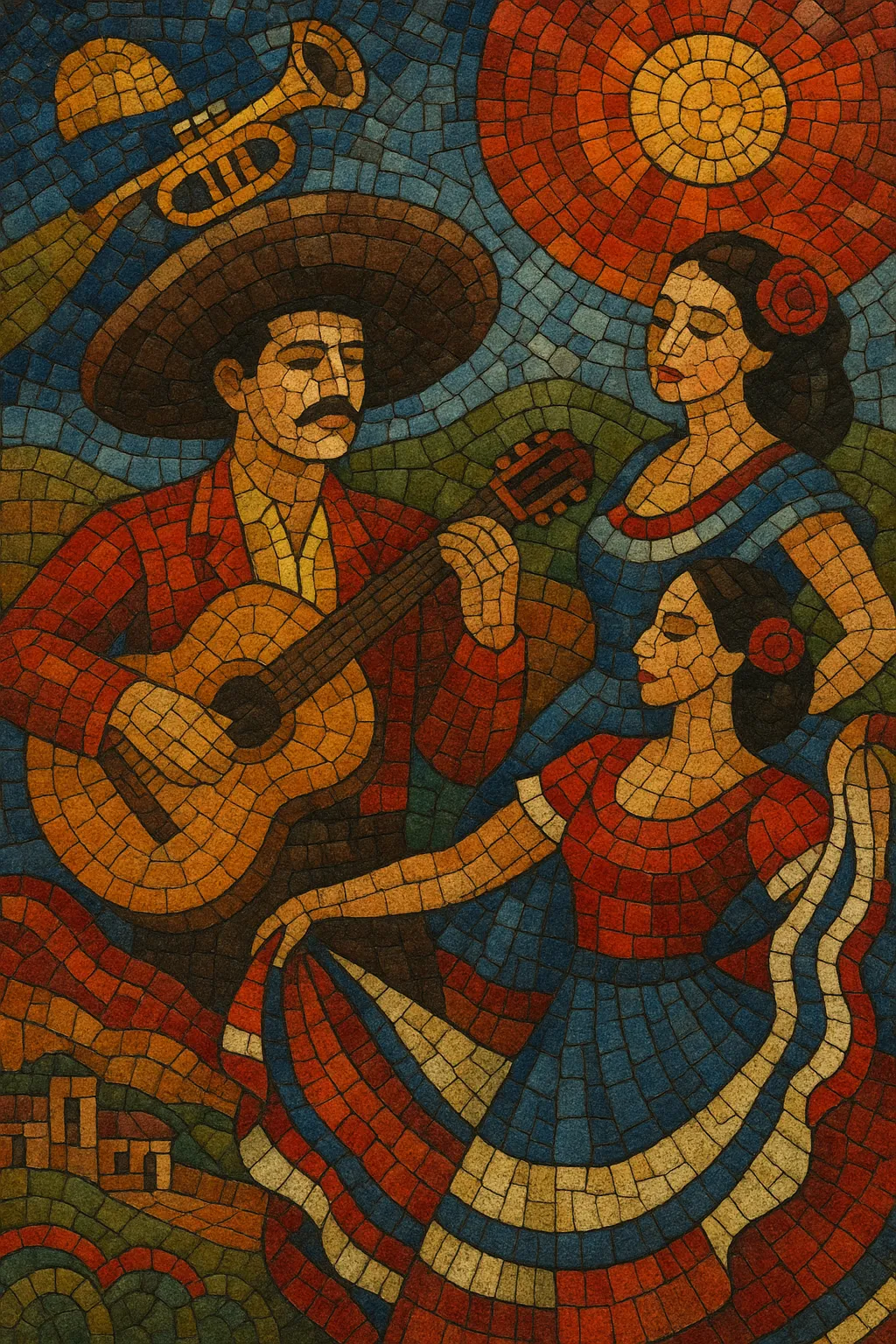Yu-Mex (Yugoslav–Mexican) is a mid-20th-century popular music phenomenon that emerged in socialist Yugoslavia after World War II, blending Mexican ranchera and mariachi aesthetics with local schlager, pop, and dance-orchestra traditions.
It was catalyzed by the massive popularity of imported Mexican films at a time when much Western (especially Anglo-American) popular culture was restricted. Yugoslav singers and radio/TV orchestras adapted Mexican standards and original songs into Serbo-Croatian, Slovene, and other local languages, keeping the dramatic trumpet-and-string flourishes, bolero/ranchera rhythms, and passionate vocal delivery. The result is a distinctly Yugoslav take on Latin romanticism: cinematic, melodic, danceable, and nostalgic.
In the early Cold War years, Yugoslavia’s cultural policy limited many Western imports, but Mexican cinema was widely distributed and became a sensation. The soundtracks—rich in ranchera and bolero—captivated audiences and performers alike. Radio ensembles and state orchestras began arranging Mexican repertoire for local tastes, laying the foundations of the Yu-Mex style.
Yugoslav singers recorded Mexican standards and new songs with lyrics in Serbo-Croatian, Slovene, and other languages of the federation. Orchestration typically featured trumpets, strings, acoustic guitars, and accordion, combining mariachi dramatics with Central European schlager smoothness. This hybrid circulated through radio, TV variety shows, festivals, and 7-inch singles, making Yu-Mex a mainstream romantic and dance music of its time.
Yu-Mex retained hallmarks of ranchera and bolero: lyrical melodrama, call-and-response horn lines, and waltz (3/4) or steady 4/4 ballroom pulses. Harmonies followed classic, tuneful progressions (I–IV–V and I–vi–IV–V), while arrangements emphasized cinematic crescendos and crooning vocals. Many releases were covers or adaptations of Mexican hits; others were originals that emulated the idiom.
Although Yu-Mex declined as Yugoslavia opened to broader pop influences in the late 1960s and 1970s, it remains a cherished memory of mid-century mass culture. Its recordings continue to be reissued and documented, symbolizing a unique, cross-cultural moment when Latin romanticism became part of Yugoslavia’s own popular soundscape.


